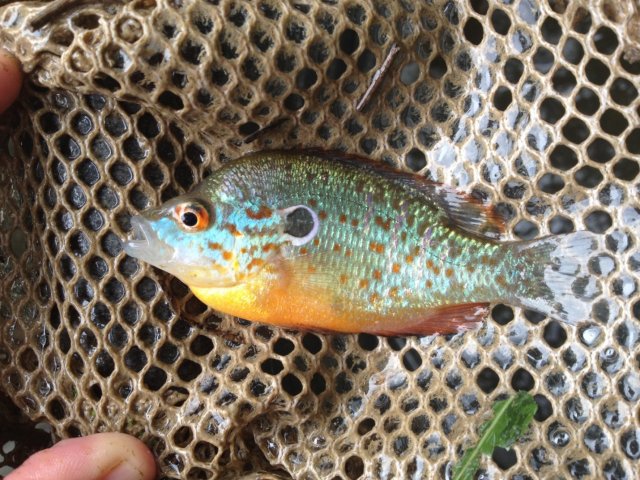Indicators: Fish Assemblage
What is fish assemblage?
Fish assemblage refers to the variety and abundance of fish species in a given waterbody.
Why is it important to evaluate fish assemblage?

Fishes are important ecologically, economically, culturally and recreationally. Fishes are sensitive to chemical or physical conditions that allow them to survive and reproduce therefore evaluating fish assemblage can provide information on the condition of the environment.
Human activities including pollution can affect water availability and temperature, water chemistry, and sediments. In addition, building barriers, like dams and road culverts, can prevent fish from migrating to locations that they occupied historically. Removing natural barriers by artificially connecting waterbodies, releasing bait fish and/or household pets can introduce fish into locations where they were historically absent or affect current fish populations and ecosystems. NARS monitors and evaluates fish assemblages to understand if, and how, this important component of aquatic ecosystems is changing.
What can fish assemblage tell us about the condition of water?
Fish assemblages are often evaluated as part of water monitoring programs because they can indicate chemical, physical and biological condition over long periods of time. The effects of humans on the environment can change over time and are often difficult to detect. Scientists can use the presence, absence or abundance of specific fishes to identify temporary, transient or periodic changes in condition. The abundance or diversity of fish assemblages can change as a result of disturbance and therefore serve as a direct indicator of biological condition.
How is this indicator used in NARS?
The National Rivers and Streams Assessment collects fish assemblage data which is available on the NARS data page for these surveys. Below the table you access assessment information in current reports.
| NLA | NRSA | NCCA | NWCA | Indicator Type |
|---|---|---|---|---|
| X | Core Indicator | |||
| Research Indicator |
National Rivers and Streams Assessment Web Report – Fish Assemblage Results
